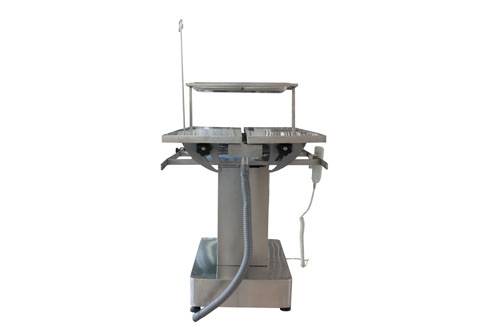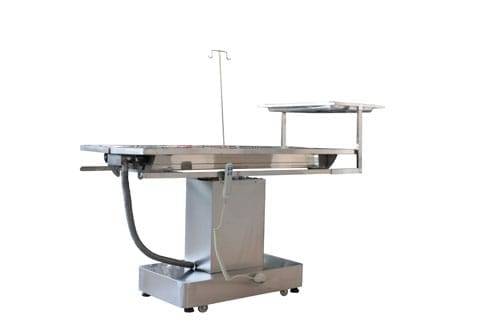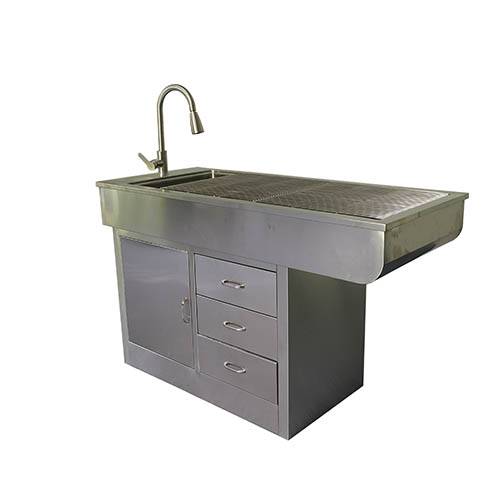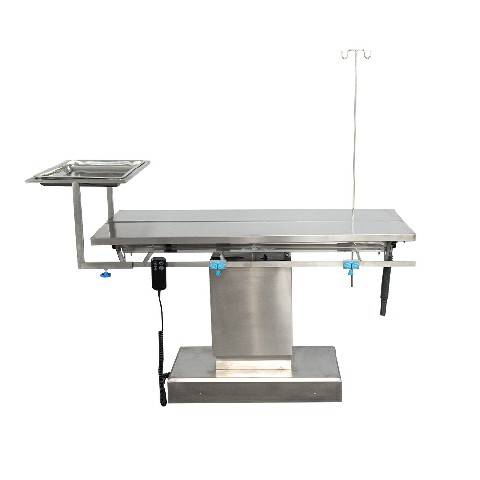Адрес
304 North Cardinal St.
Дорчестер-центр, Массачусетс 02124
Часы работы
С понедельника по пятницу: с 7:00 до 19:00.
Выходные: 10.00 - 17.00
Selecting the right operating table is one of the most important decisions for any veterinary practice. As the centerpiece of any surgery suite, the operating table impacts workflow efficiency, ergonomics for staff, patient positioning, and overall surgical outcomes. With so many models on the market featuring different designs, weight capacities, and functionalities, it can be challenging to determine which операционный стол ветеринара best matches your needs and budget.
В этой записи блога рассматриваются 10 основных функций, которые следует оценить при поиске различных ветеринарных операционных столов для покупки. Понимание этих ключевых аспектов поможет вам инвестировать в прочный, высокопроизводительный стол, адаптированный под вашу конкретную хирургическую нагрузку и процедуры. Читайте дальше о факторах для сравнения, таких как подъемные системы, поверхности, хранение, аксессуары и многое другое при обновлении вашего хирургического отделения новым ветеринарным операционным столом.

The first major consideration is whether you need an operating table with a powered lift system or a manual hydraulic lift. Electric lift systems allow for precise height adjustments at the push of a button or foot pedal. This allows surgeons to raise or lower the table quickly for better ergonomics without breaking their sterile field. Manual lifts are more affordable, but don’t offer the flexibility and convenience of electric systems.
| Тип | Плюсы | Минусы |
| Электрический | Precise on-demand adjustments, better workflow | More expensive, training required |
| Руководство | Inexpensive, no electronics/training needed | Limited adjustments, slower workflow |
When choosing between electric or manual lift vet operating tables, consider your budget, average procedure times, and number of surgeries. Electric lifts improve efficiency but require more investment upfront.

Операционные столы come rated for different maximum weight capacities. Standard large animal tables accommodate 1,000 – 1,500 lbs, though specialty models support up to 6,000+ lbs for large livestock. For mixed practices, look for a bariatric vet operating table rated for at least 500 lbs to accommodate large dogs. Maximum weight should be distributed across the table surface. Carefully review capacity to ensure the table can handle your patients. Exceeding weight limits poses an injury risk to staff and animals.
The material covering the operating table surface significantly impacts functionality. Common options include:
Stainless Steel – Durable and easy to disinfect but cold for patients
Phenolic Resin – Warmer and more comfortable but prone to scratches
Gel Pads – Provide cushioning and warmth, though are difficult to fully disinfect
Think about patient positioning and warming needs when evaluating surface materials. For most procedures, phenolic resin or stainless steel with gel pads offers the best blend of infection control, usability, and patient comfort.






The Trendelenburg position tilts the operating table to elevate a patient’s hindquarters above the head and chest. This allows gravity to assist surgical exposure and procedures. Electric lift vet operating tables often come equipped with powered Trendelenburg positioning operable via foot pedal or button up to 30 degrees. Manual tables require staff to physically tilt the table.
Trendelenburg mode is especially helpful for procedures like splenectomies, gastropexies, and colon resections. If you routinely perform abdominal surgeries, investing in electric-powered tilt capability optimized for large animal maneuverability can significantly boost surgical efficiencies.
Tracking patient fluid levels and blood loss is critical during any major surgery. While external scales can monitor weight, the most advanced vet operating tables feature integrated weighing systems displaying weight data in real-time. This allows staff to observe trends and quickly respond to losses.
When reviewing vet operating tables, look for models featuring:
Load cell sensors in the lift system
Digital weight display visible to surgeons
Tare/zero functionality to isolate changes
Wireless connectivity to transfer recordings
While built-in scales do add complexity and costs, the patient care benefits often justify the value.
Operating tables come designed either as stationary models that permanently fix to the floor, or mobile tables with wheels or casters below the base. Mobile models provide flexibility to transport anesthetized patients from prep areas directly into operating rooms. However, mobile bases should lock securely in place during surgery for maximum stability.
Here’s a comparison of stationary and mobile operating table configurations:
| Тип | Плюсы | Минусы |
| Stationary | Rock solid stability, lower cost | Less flexibility for patient transport |
| Мобильный | Move patients easily, reconfigure rooms | More expensive, not as stable |
Assess your workspace layouts and patient flow between spaces when choosing between stationary or mobile vet operating table options.
The latest veterinary operating tables incorporate storage compartments and shelves within the base. This provides convenient access to surgical supplies, fluids, reusable pads/drapes, and other necessities without leaving the sterile field.
When comparing vet operating table models, look for the following storage features:
Large interior capacity and access doors
Adjustable shelves and compartments
Customizable drawers for instruments
Storage extending the entire base length
While integrated storage requires a larger footprint, the workflow and organizational efficiencies often make the tradeoff worthwhile for busy practices.
Specialized orthopedic and neurosurgery procedures require greater dimensions and adjustability. Many advanced electric lift vet operating tables offer modular orthopedic extension accessories to customize surface dimensions and reduce strain on staff. Common options include:
Imaging extensions – Cantilevered arms supporting weight of extremities for better radiography access
Rise & fall extensions – Adjustable wing supports to eliminate dangling limbs
Fracture tables – Adjustable orthopedic platforms allowing 360° limb manipulation
Review available extension modules and imaging compatibility for the procedures you perform when comparing vet operating tables.
Maintaining normal body temperature during prolonged anesthesia is critical. Operating tables may integrate conductive warming pads plumbed with hot water hoses that either run below the tabletop surface or affix directly to the underside. This helps prevent hypothermia by mimicking a patient’s normal body heat while sedated.
When reviewing operating tables, look for models featuring:
Large warming surface areas for good heat transfer
Adjustable temperature settings and cutoffs
Compatibility with standard hot water pumps
Quick-disconnect hoses and fittings
Warming pads do add complexity and physical bulk, so also consider needs based on your typical procedure lengths and patient types.
Like any major capital equipment investment, be sure to thoroughly assess the build quality, materials, hardware, accessories, and warranty terms when researching vet operating tables. Key indicators of durability include:
Stainless steel construction
Powder coated frameworks
Solid lift actuator housings
High-density table surfaces
Warranty period & replacement parts guarantees
Avoid cheaper imported models that may dent, bend, or break easier under repeated heavy loads. Paying more upfront for a robust commercial-grade table manufactured domestically or in Europe helps ensure safety, reliability, and long service life.
Investing in a new vet operating table allows growing practices to upgrade capabilities, achieve better surgical outcomes, reduce staff fatigue, and improve overall workflow efficiency. Keep this top 10 list of key features handy while comparing different models across brands and prices ranges. Look for attributes like electric lift systems, ergonomic height ranges, accessory modules, storage, and integrated patient warming that best align with your practice’s specific mix of cases and procedures. With so many options available, take time to evaluate critical factors that justify the significant capital expenditure. Paying attention to these details helps ensure you select the ideal vet operating table tailored to your unique needs while providing a lasting return on investment through enhanced patient care.
Veterinary operating tables range widely in cost from approximately $3,000 on the low end for manual models up to $15,000+ for fully loaded electric lift tables with storage, accessories, and other premium features. Realistic budgets for electric tables are typically $8,000 – $12,000.
For accessibility, usability, and emergency scenarios, allow for at least 36″ clearance on all sides of the operating table base. This gives staff sufficient room to maneuver, adjust height positions, open storage, and quickly relocate laterally if needed.
Search for operating tables tested to IEC 60601-2-46 international standards for usability, electrical safety, electromagnetic compatibility, risk mitigation, materials, labeling, and infection control. These requirements help minimize hazards and ensure optimal performance.
Buying refurbished can save substantially on costs. But for such a critical piece of veterinary equipment, purchase new from reputable dealers that provide installation support, warranty protection, accessories, and guidance tailoring the table’s capabilities for your specific caseloads.
